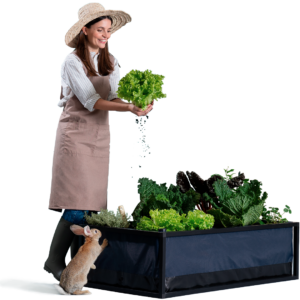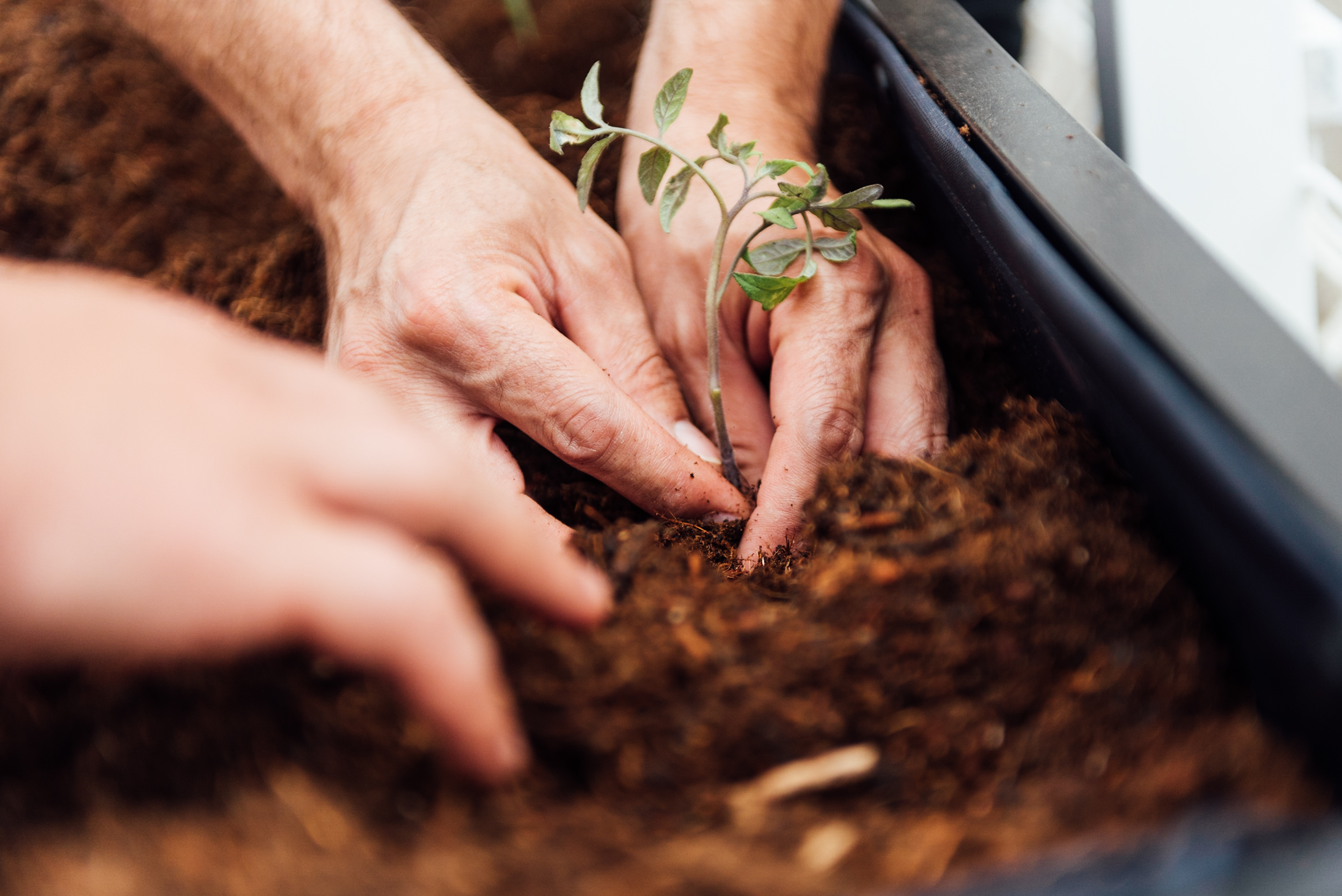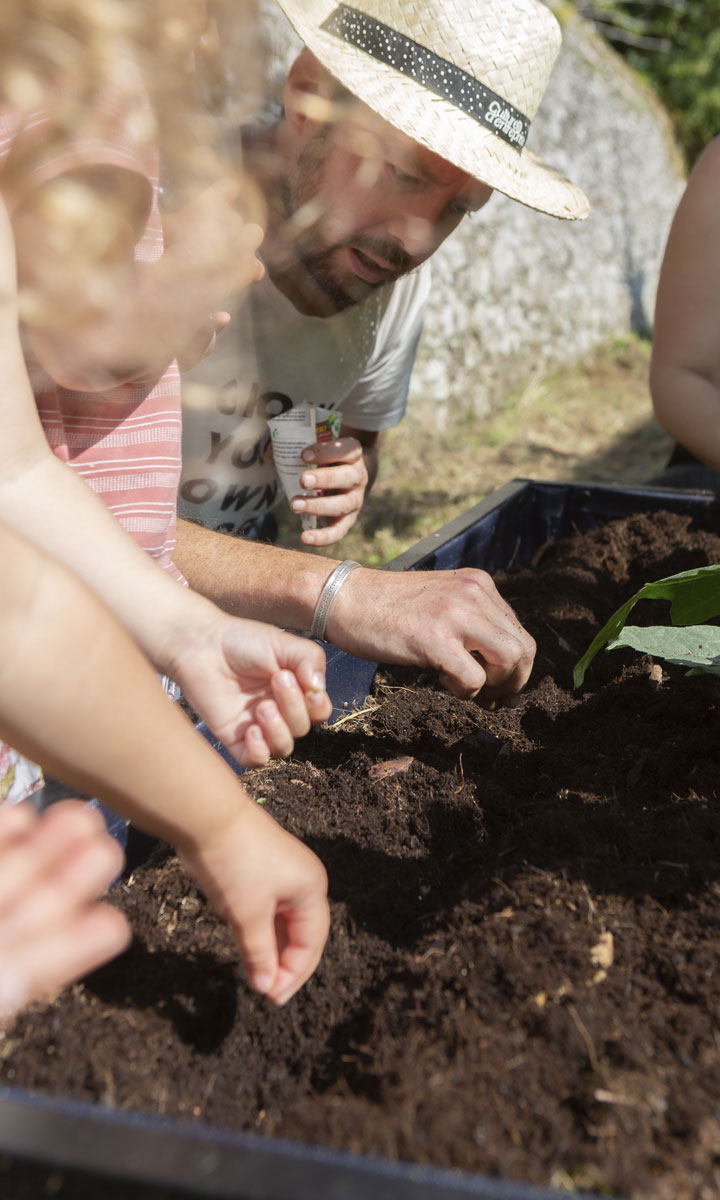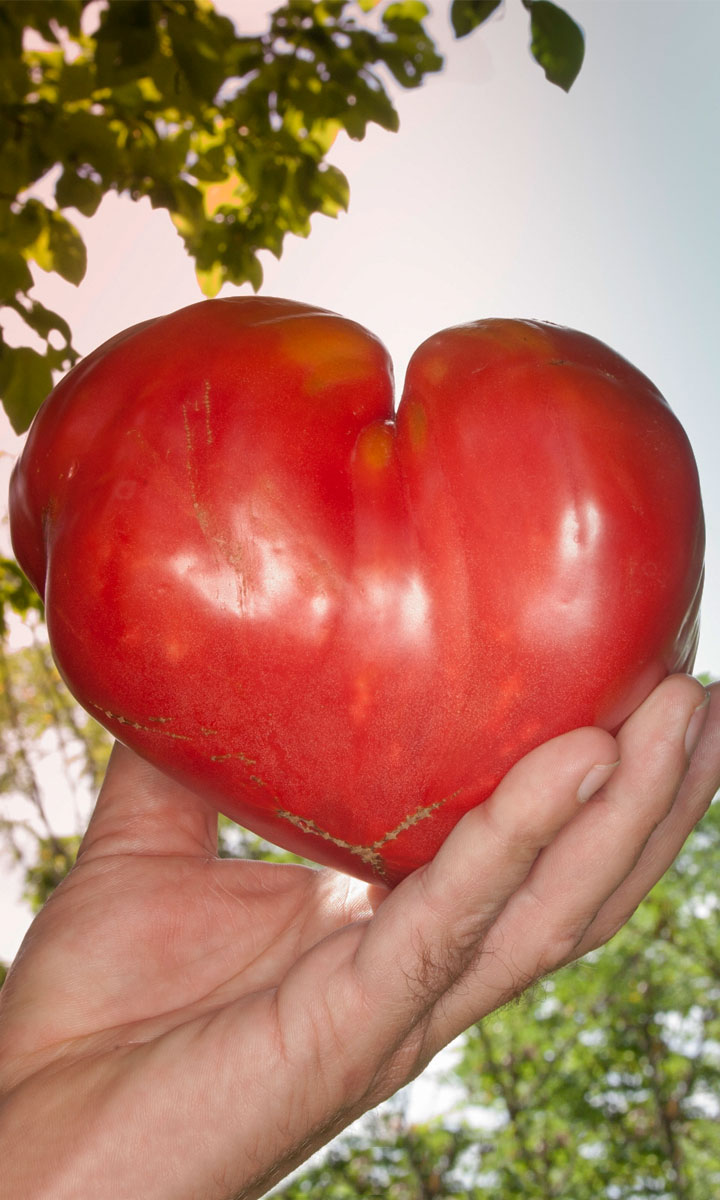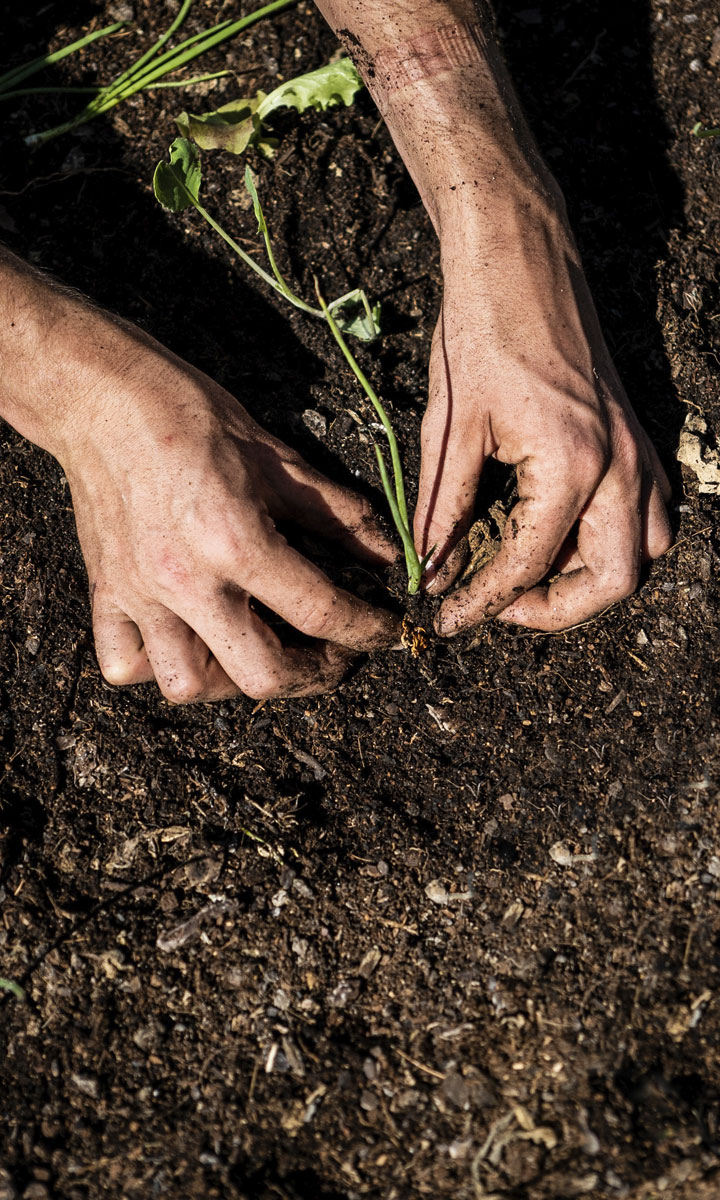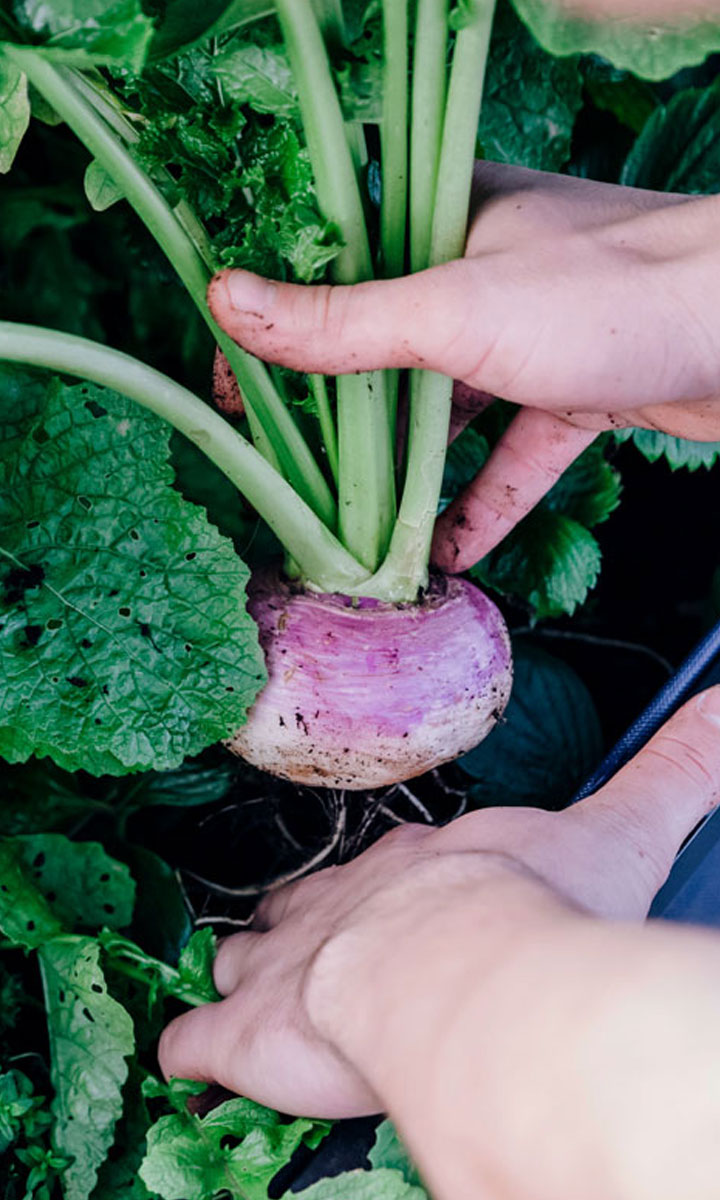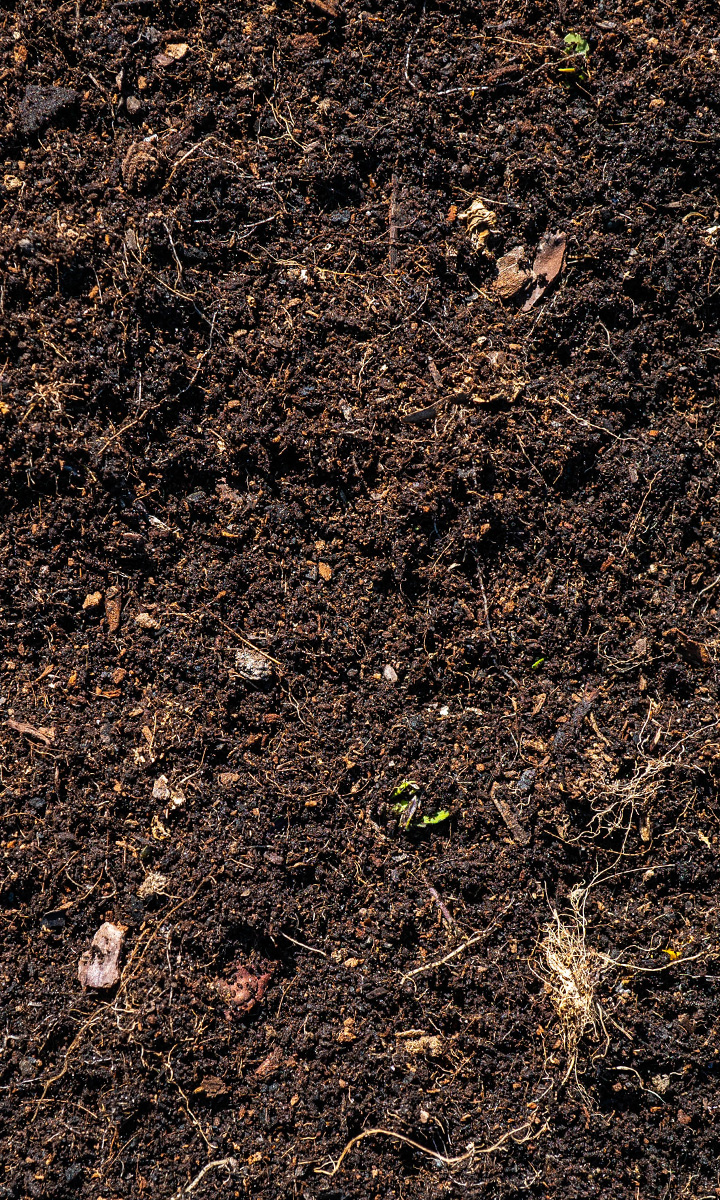Menu
What to grow in your garden and when!

Henrique Dias
Webmaster
In the garden, unlike at the supermarket, not everything is available all year round.
In theory, we know that spring is always a good time to start something, that the summertime will bring us joy and that come fall, we should get ready for colder and darker days.
“There’s no such thing as bad weather, just bad clothing” is a common saying in northern Europe — and it’s the same in the garden. In other words, by planting the right crops for each season, you can extend your garden’s productivity even when the cold sets in and sunlight is less abundant.
Naturally, this requires planning, as natural cycles take time (unlike the supermarket, where replacements magically happen overnight). There are crops with short, medium or long cycles, and they tell us a lot about how long they take to grow and how early we should sow or plant them. One thing is certain: to avoid frustration, it’s always best to have a plan.
Here are some suggestions of what to grow in your vegetable garden and when!
Plant before it gets too cold.
Let’s start with the tough seasons, fall and winter. They may seem like less fruitful times for gardening, but that doesn’t have to be the case.
Let’s go back to the idea of short, medium and long cycled crops and see these two seasons as an opportunity to plan out the time we have.
If you think lettuce only belongs to the warm days of summer, think again — leafy crops like arugula, mizuna and spinach are great at withstanding the cold. Depending on where you live, you can sow them in late September (or early October in milder climates) by uniformly spreading the seeds over a row 1 cm deep. Then, carefully cover them with substrate, and make sure you keep the surface of the soil moist until the plants start to germinate. Leafy crops are tolerant to shade and are medium-cycled crops, meaning they’ll ready to harvest in about 8 to 16 weeks.
Another good cold-weather crop is the trusty root vegetable! Turnips and kohlrabi will grow underground in about 10 weeks, meaning that if you want to harvest them in mid-December, you’ll need to plant them in October at the latest. Carrots, parsnips and onions take a bit longer to grow, so you should consider planting them in September instead.
Cabbages are another winter warrior. Resistant to cold weather, kale and savoy cabbage can handle the lower temperatures, and even the first snowfall! Cauliflower and broccoli can also be planted until nearly the end of October, depending on where you live. Remember that more distance between your plants will give you bigger flowering heads.
Although most of the crops mentioned above are cold-resistant, they do require certain protection from the elements like wind, high humidity or extreme temperature fluctuations. These can seriously damage your plants. The solution lies in using protection such as mulch, greenhouses or even more improvised protection — a 5-liter jug of water, cut in half, can be used as an individual cover for small or fragile plants.
Before reaching the brighter seasons, it’s worth remembering that January and February are good times to prepare what comes next, meaning: Spring. That been said, it’s time to start planning which crops you’ll want to plant in the next months and start sowing those seeds inside the house.
Spring and Summer are “ready to grow”!
Again, let’s go back to the subject of faster and slower-cycle crops and consider both of these seasons as a whole, because if you want harvest pumpkins in September, you need to sow them in February and plant them in April, at the latest.
The same goes for zucchini — planted by May, it may only bear fruits in mid-June. In the meantime, you can take advantage of their amazing edible flowers!
The star of the season, tomatoes, should be sown between February and March. To do so, bury 3 to 4 seeds in a hole 2cm deep (you can use an egg carton, for example) and keep them indoors in moist substrate until they begin to germinate. If they don’t receive enough light, the sprouts will grow tall but fragile, so it’s important to give them several hours of direct sunlight. When your plant reaches about 10 to 15 cm in height (or has 4 to 6 pairs of leaves), it’s time to transplant it to its final location. Choose a sunny spot in your garden, since tomato plants need a lot of sun to grow, and note that they can either grow in width (as a bush) or in height. The latter is more likely to bear fruits, but it will need the help of a stake. Bury the stake close to the stem when the plant is still young or freshly planted (doing this too late might risk damaging the roots) and tie the plant to the stake as it grows.
Crops to grow throughout the year.
Now that you know which crops will benefit most from warmer or colder weather, it’s time to discover the species that can grow year-round.
One of these is the radish, a short-cycled crop that adapts both to sun and shade. You might be familiar with the round, reddish look of the summer variety, but the more elongated, white version is just as delicious and better suited for winter. Both can be sown in high density, meaning you can spread their seeds close to each other. The summer variety can be sown between March and September but from October onwards, it’s best to stick with the winter variety.
Another nourishing and versatile root that can be grown during several months of the year is beetroot! You can plant it from March all the way until November, and as a medium-cycled crop, it will take 7 to 13 weeks to be ready to harvest. Despite being quite heat-resistant, it won’t thrive in dry soil, as its roots will stay small and fibrous. Along with the most common dark red variety of beetroot, you can explore a wide new palette with the Golden, the White or the Chioggia varieties!
Last but not least, we have strawberries! You might think of them as a summer crop, but actually, that’s not exactly true. Strawberries come in many varieties and can be classified in two groups: everbearing and June-bearing.
Everbearing refers to plants that can flower several times during a certain span of the year, usually between spring and autumn. They then enter a period known as vernalization — when the plant is exposed to low temperatures, equal or below 7ºC, it stimulates flowering and fruit production. June-bearing refers to strawberry plants that only flower once a year.
Do you feel confident enough to choose what to grow in your garden and when to grow it?
When it comes to nature, we know there’s always something more to say! But with this information, you can understand your garden’s capacity for change, and how can you take advantage of it!
